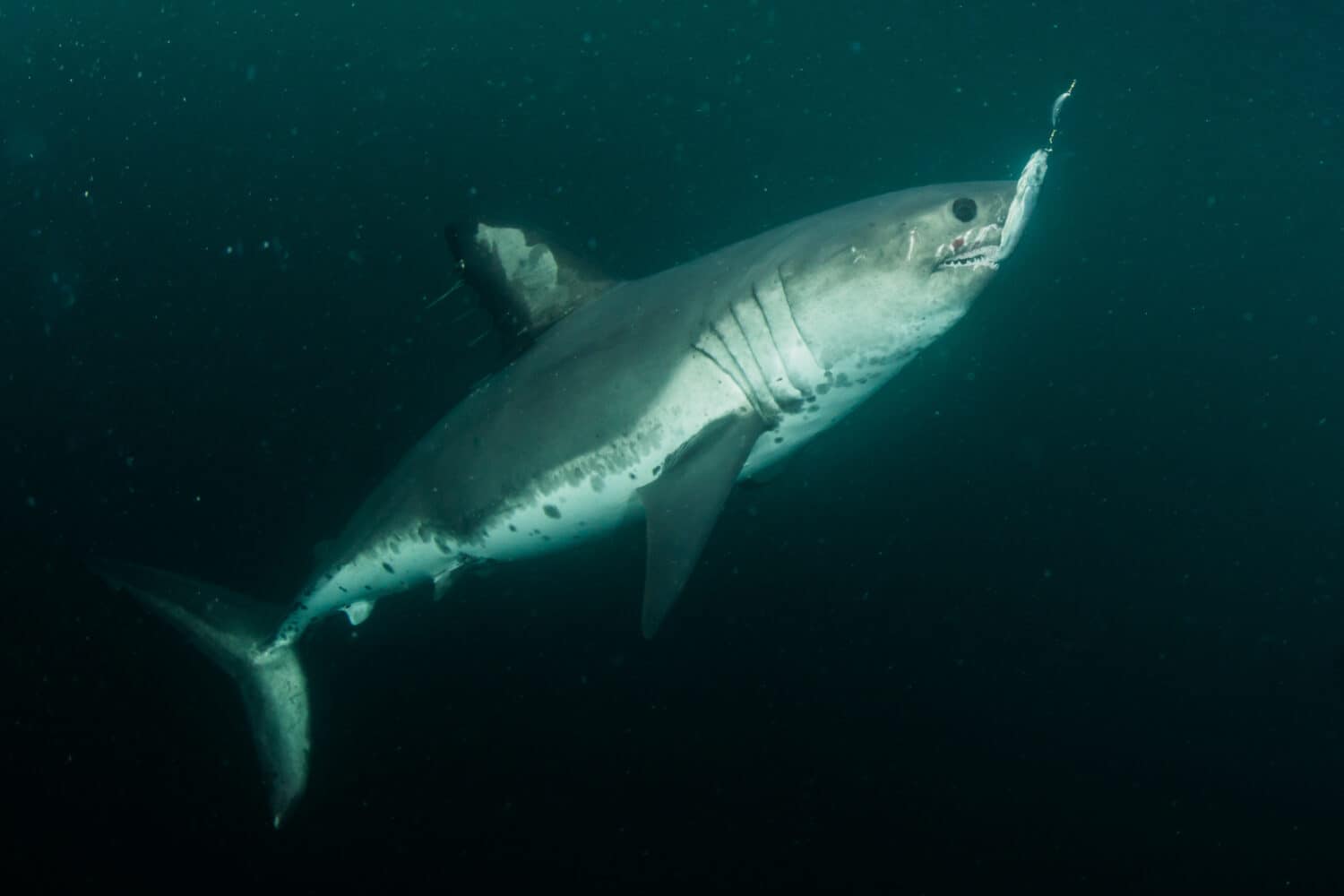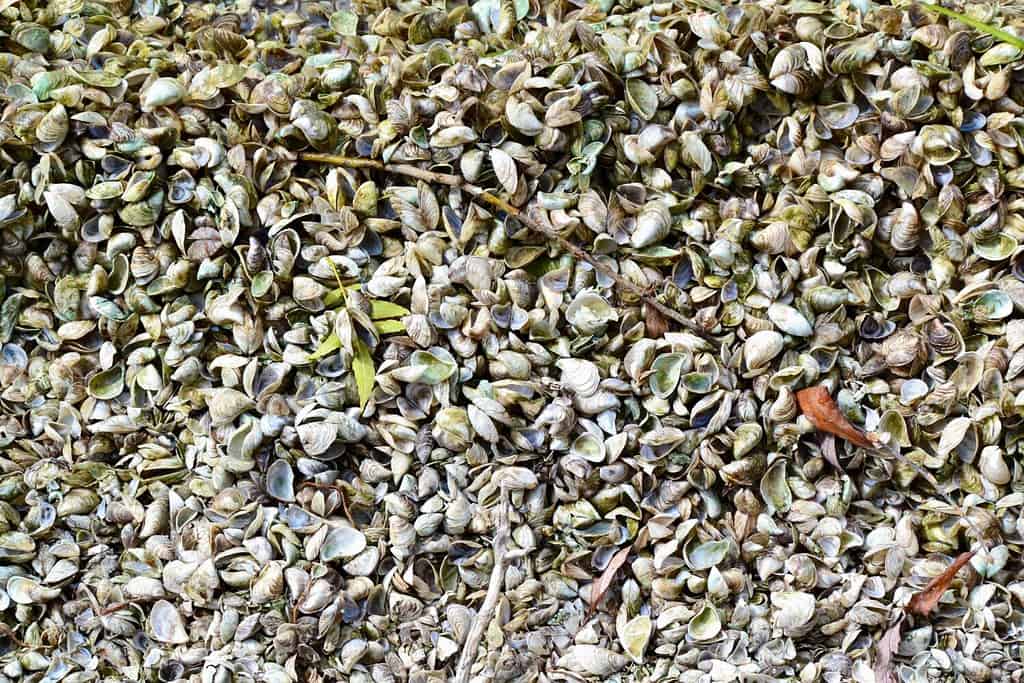Midway through August, the carcass of a salmon shark was discovered by Idaho citizens, who were immediately intrigued by the peculiar sight. Following reports of humans running into the shark on the shores of the freshwater Salmon River, the Idaho Department of Fish and Game received an unprecedented number of calls.
This type of shark is no small fish, either. They can weigh up to 1,000 pounds and grow to lengths of between seven and 10 feet. While the thought of sharks in the river can make your skin crawl, now there’s a new threat to the water source that’s making headlines.

Salmon sharks are elusive and there are few photos of them.
©Warren Metcalf/Shutterstock.com
In what is being called a “potential crisis,” a number of specimens of quagga mussel larvae were discovered by the Idaho State Department of Agriculture. The majority are in the waterways close to Twin Falls‘ Centennial Waterfront Park.
How Quagga Mussels Affect Idaho Residents
This is causing the state to close several bodies of water. The state faces a serious threat from quagga mussels as far as its economy, leisure activities, and water use. These critters will cling to any material they may find as they develop and become mature.
Included in that are irrigation lines, piers, docks, and anything else we wish to maintain clean and clear of mussels. The mussel was discovered on Monday thanks to boat checks and water sample collection by the ISDA.

Quagga mussels are closely related to
zebra mussels
.
©Chris Dale/Shutterstock.com
In addition to living in several bodies of water, they also devour resources that we require for other species. Within water systems, they can produce monocultures.
Then, simply by virtue of their existence, the colony can ruin irrigation, hydroelectric power generation, and all other wateractivities. For a long time, the department has been attempting to stop invasive mussels from entering the waterways of the state. They do this by inspecting over one million watercraft and gathering over 15,000 water samples.
The governor states that even though this is a potential crisis, it is manageable.
What Are Quagga Mussels?
Eastern Europe is home to the aquatic invasive species known as quagga mussels. These mussels can cling onto hard and soft substrates in freshwater and are vigorous breeders. These mussel species’ sharp, potentially piercing shells make it necessary to wear footwear when traversing rocks or infected beaches.
Boat hulls with mussels attached may boost drag, alter steering, and jam engines, every one of which can cause overheating and problems with the engines. Thousands of birds have died as a result of avian botulism epidemics linked to these mussels in the Great Lakes.
Quagga mussels can bioaccumulate organic contaminants in their cells by upwards of 300,000 times when compared with the quantities in the water in which they are dwelling due to their filter-feeding behavior.
The photo featured at the top of this post is © JonPeckham/Shutterstock.com
Thank you for reading! Have some feedback for us? Contact the AZ Animals editorial team.






